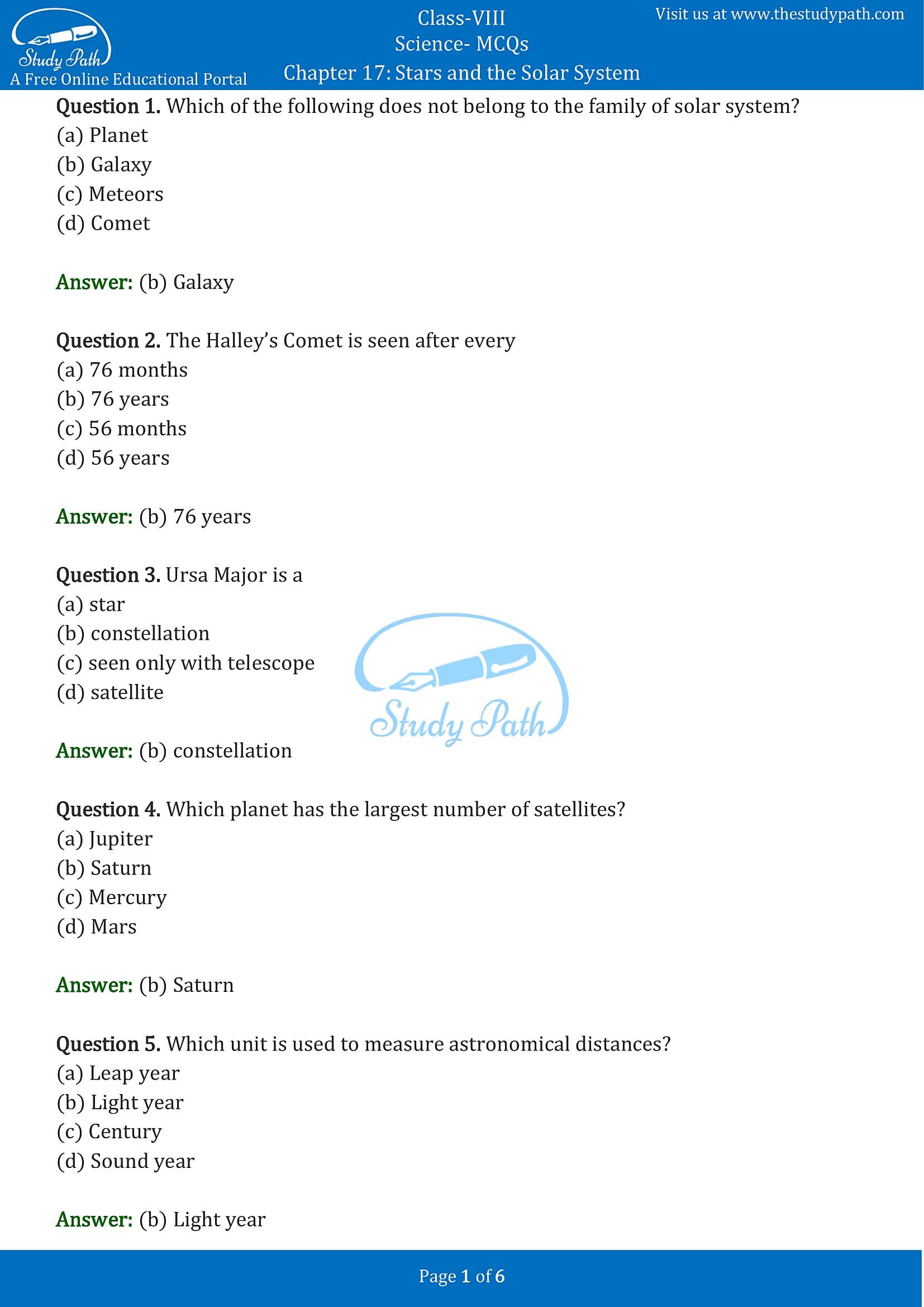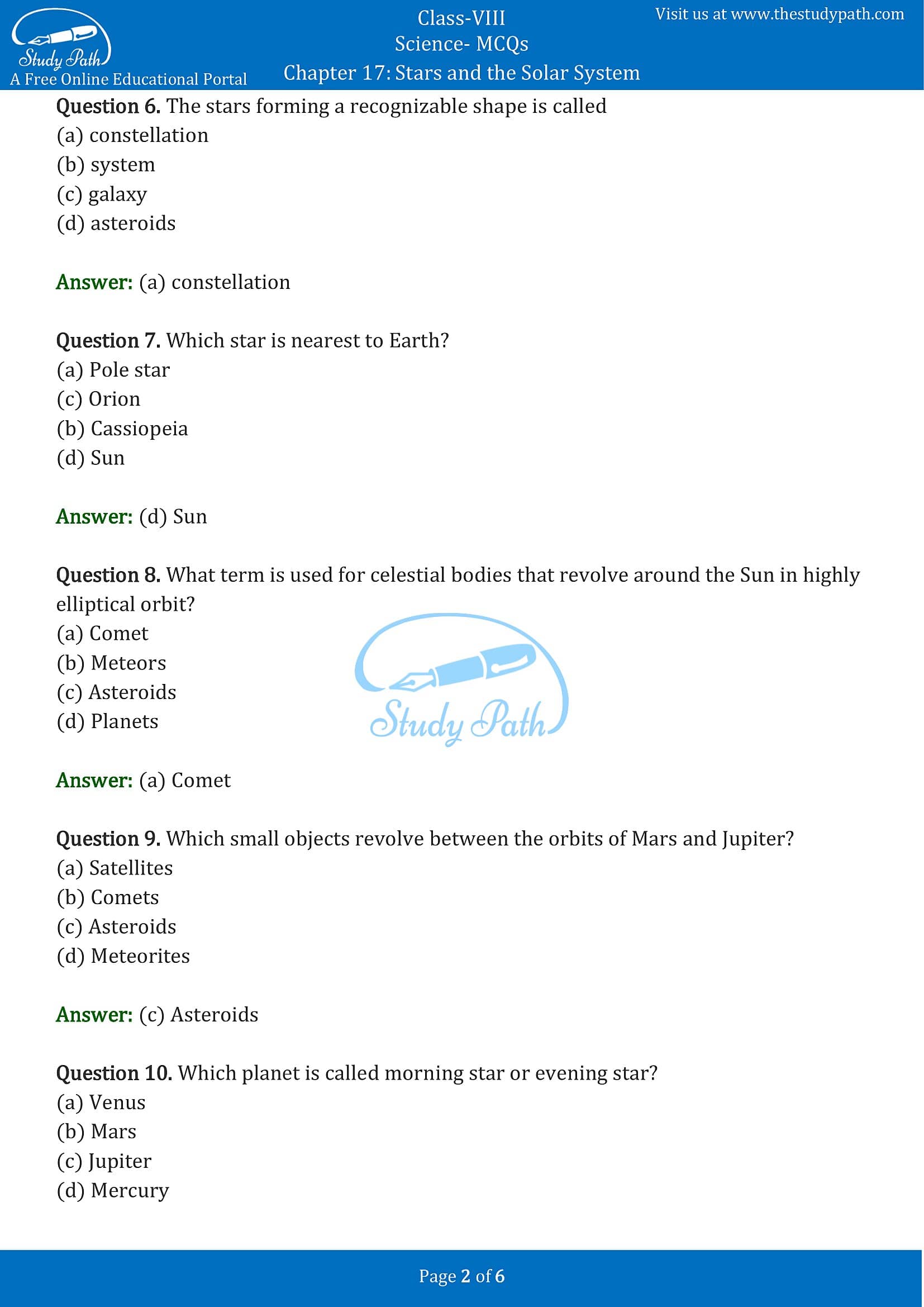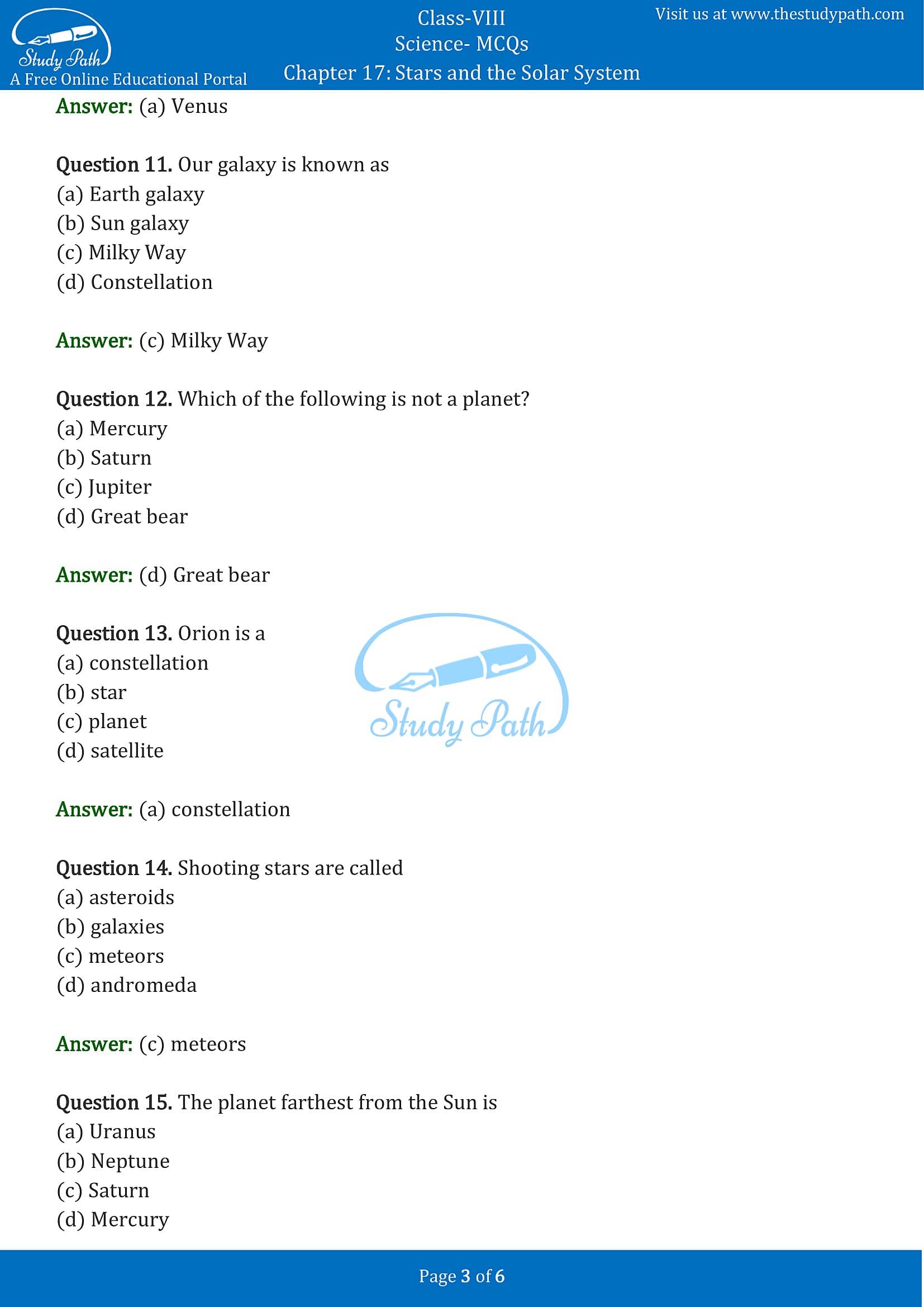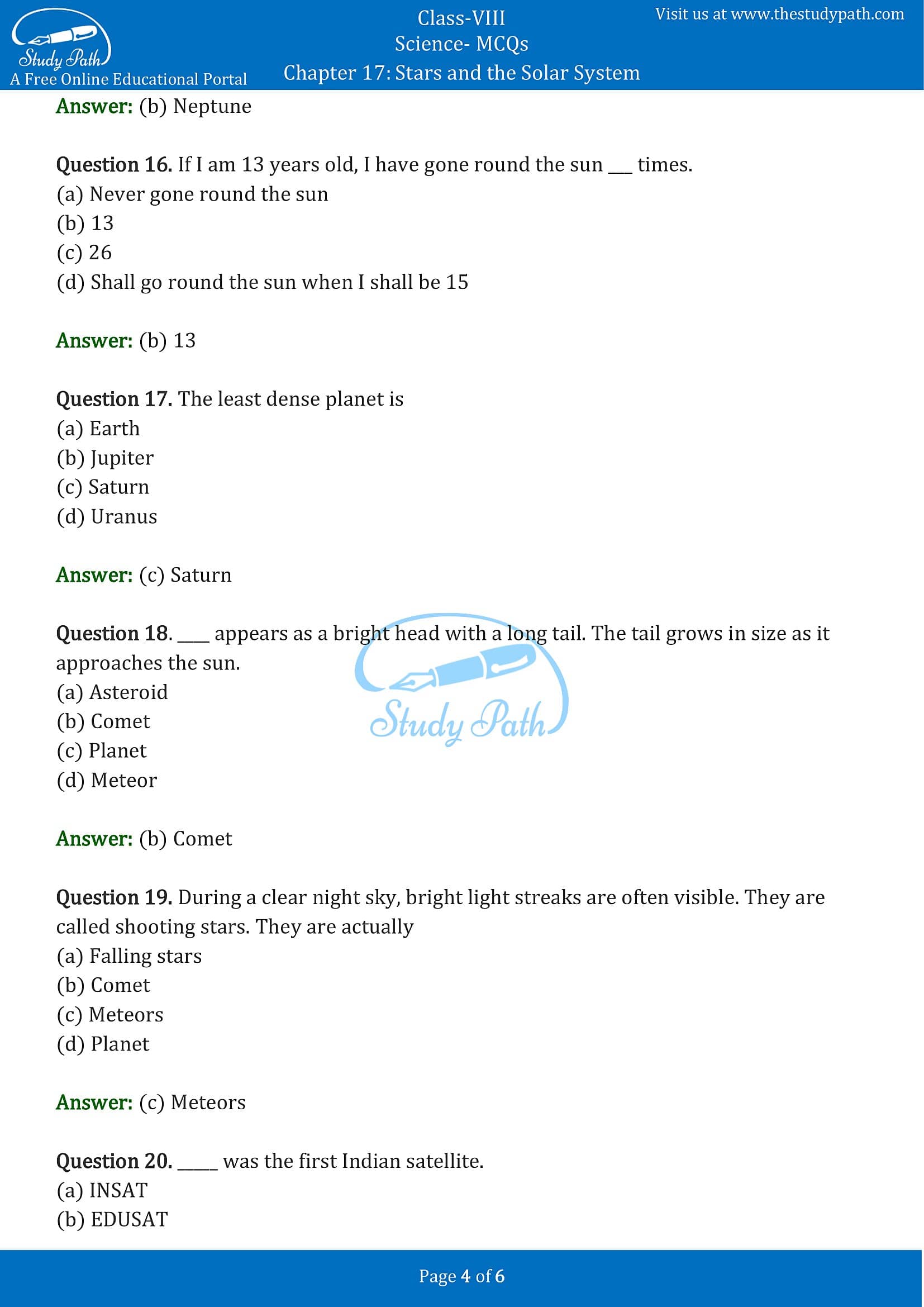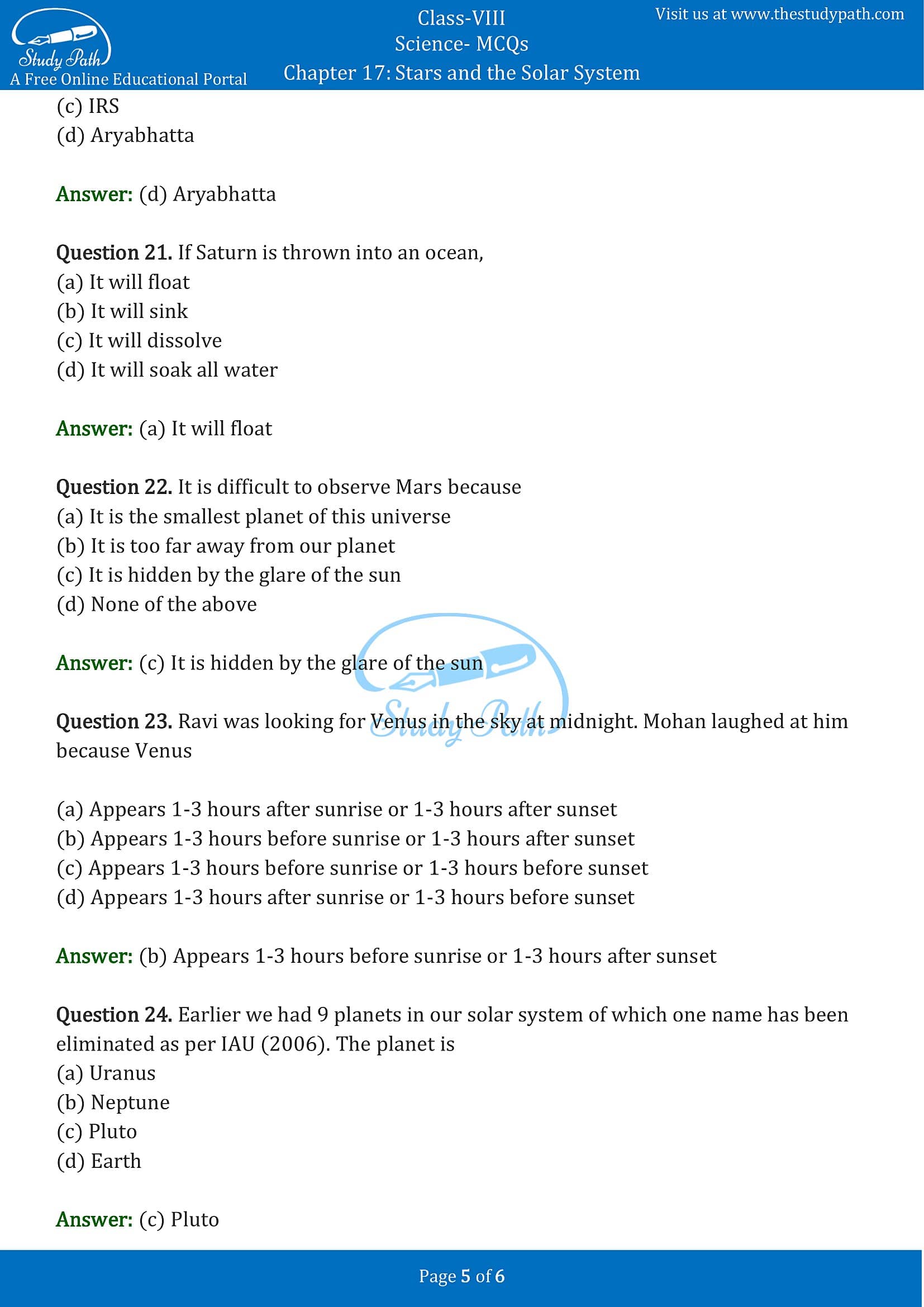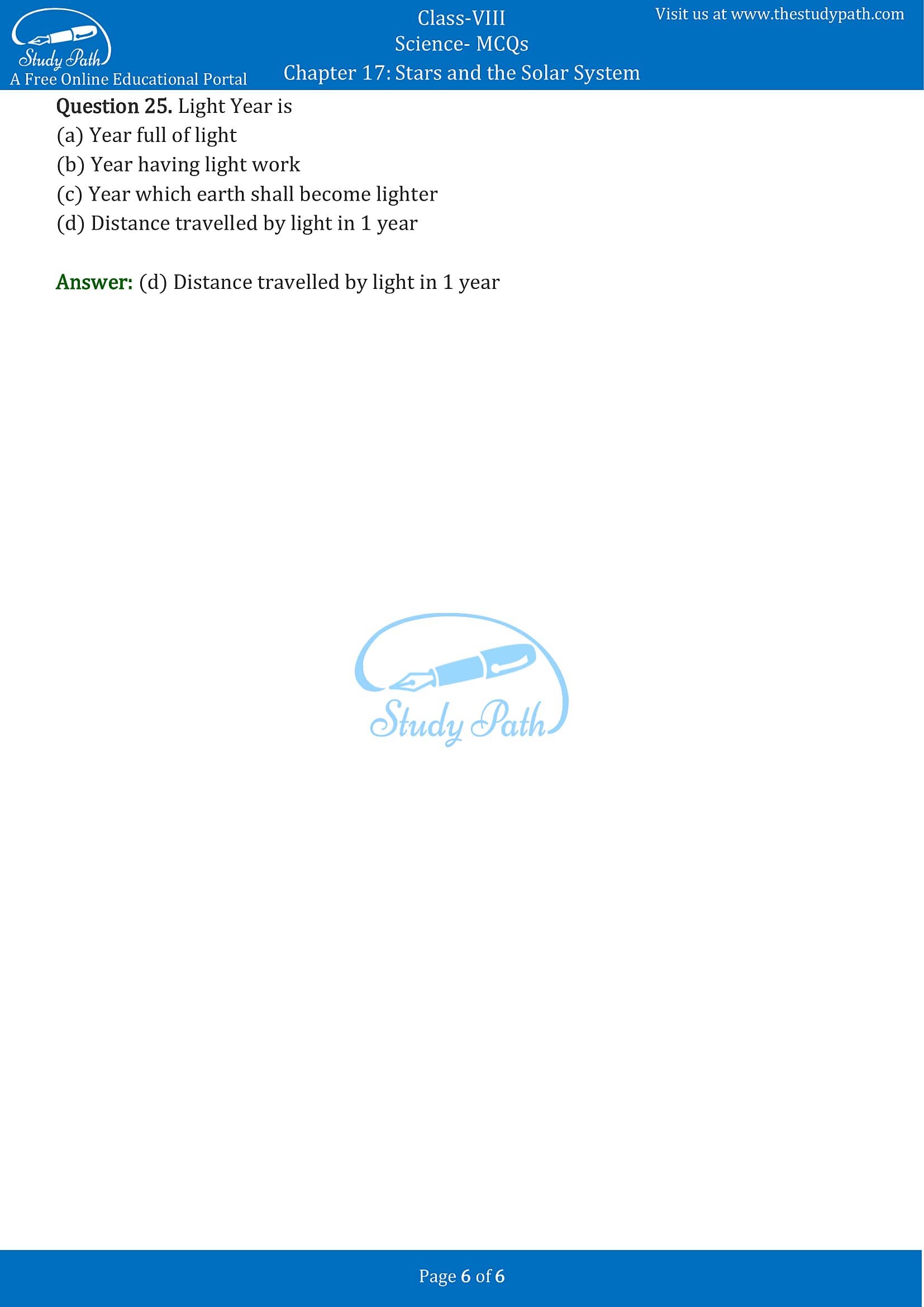Class 8 Science Chapter 17 Stars and the Solar System MCQ with Answers
Class 8 Science Chapter 17 Stars and the solar System MCQ (Multiple Choice Questions) with Answers is available here in PDF format. CBSE Class 8 Science Stars and the solar System Objective Questions helps the students to understand the concepts thoroughly and to score good marks. Practising these MCQs will help you to answer every question that is being asked in the exams.
At Study Path, you can download PDF of Multiple Choice Questions for Class 8 Chapter 17 Stars and the Solar System with Answers. We prepared these MCQs on the basis latest exam Pattern. Students can solve NCERT Class 8 Science Stars and the solar System MCQs before the exam to know their preparation level.
Stars and the Solar System Class 8 MCQ with Answers
Multiple Choice Questions (MCQs)
Question 1. Which of the following does not belong to the family of solar system?
(a) Planet
(b) Galaxy
(c) Meteors
(d) Comet
Answer: (b) Galaxy
Question 2. The Halley’s Comet is seen after every
(a) 76 months
(b) 76 years
(c) 56 months
(d) 56 years
Answer: (b) 76 years
Question 3. Ursa Major is a
(a) star
(b) constellation
(c) seen only with telescope
(d) satellite
Answer: (b) constellation
Question 4. Which planet has the largest number of satellites?
(a) Jupiter
(b) Saturn
(c) Mercury
(d) Mars
Answer: (b) Saturn
Question 5. Which unit is used to measure astronomical distances?
(a) Leap year
(b) Light year
(c) Century
(d) Sound year
Answer: (b) Light year
Question 6. The stars forming a recognizable shape is called
(a) constellation
(b) system
(c) galaxy
(d) asteroids
Answer: (a) constellation
Question 7. Which star is nearest to Earth?
(a) Pole star
(c) Orion
(b) Cassiopeia
(d) Sun
Answer: (d) Sun
Question 8. What term is used for celestial bodies that revolve around the Sun in highly elliptical orbit?
(a) Comet
(b) Meteors
(c) Asteroids
(d) Planets
Answer: (a) Comet
Question 9. Which small objects revolve between the orbits of Mars and Jupiter?
(a) Satellites
(b) Comets
(c) Asteroids
(d) Meteorites
Answer: (c) Asteroids
Question 10. Which planet is called morning star or evening star?
(a) Venus
(b) Mars
(c) Jupiter
(d) Mercury
Answer: (a) Venus
Question 11. Our galaxy is known as
(a) Earth galaxy
(b) Sun galaxy
(c) Milky Way
(d) Constellation
Answer: (c) Milky Way
Question 12. Which of the following is not a planet?
(a) Mercury
(b) Saturn
(c) Jupiter
(d) Great bear
Answer: (d) Great bear
Question 13. Orion is a
(a) constellation
(b) star
(c) planet
(d) satellite
Answer: (a) constellation
Question 14. Shooting stars are called
(a) asteroids
(b) galaxies
(c) meteors
(d) andromeda
Answer: (c) meteors
Question 15. The planet farthest from the Sun is
(a) Uranus
(b) Neptune
(c) Saturn
(d) Mercury
Answer: (b) Neptune
Question 16. If I am 13 years old, I have gone round the sun ___ times.
(a) Never gone round the sun
(b) 13
(c) 26
(d) Shall go round the sun when I shall be 15
Answer: (b) 13
Question 17. The least dense planet is
(a) Earth
(b) Jupiter
(c) Saturn
(d) Uranus
Answer: (c) Saturn
Question 18. ____ appears as a bright head with a long tail. The tail grows in size as it approaches the sun.
(a) Asteroid
(b) Comet
(c) Planet
(d) Meteor
Answer: (b) Comet
Question 19. During a clear night sky, bright light streaks are often visible. They are called shooting stars. They are actually
(a) Falling stars
(b) Comet
(c) Meteors
(d) Planet
Answer: (c) Meteors
Question 20. _____ was the first Indian satellite.
(a) INSAT
(b) EDUSAT
(c) IRS
(d) Aryabhatta
Answer: (d) Aryabhatta
Question 21. If Saturn is thrown into an ocean,
(a) It will float
(b) It will sink
(c) It will dissolve
(d) It will soak all water
Answer: (a) It will float
Question 22. It is difficult to observe Mars because
(a) It is the smallest planet of this universe
(b) It is too far away from our planet
(c) It is hidden by the glare of the sun
(d) None of the above
Answer: (c) It is hidden by the glare of the sun
Question 23. Ravi was looking for Venus in the sky at midnight. Mohan laughed at him because Venus
(a) Appears 1-3 hours after sunrise or 1-3 hours after sunset
(b) Appears 1-3 hours before sunrise or 1-3 hours after sunset
(c) Appears 1-3 hours before sunrise or 1-3 hours before sunset
(d) Appears 1-3 hours after sunrise or 1-3 hours before sunset
Answer: (b) Appears 1-3 hours before sunrise or 1-3 hours after sunset
Question 24. Earlier we had 9 planets in our solar system of which one name has been eliminated as per IAU (2006). The planet is
(a) Uranus
(b) Neptune
(c) Pluto
(d) Earth
Answer: (c) Pluto
Question 25. Light Year is
(a) Year full of light
(b) Year having light work
(c) Year which earth shall become lighter
(d) Distance travelled by light in 1 year
Answer: (d) Distance travelled by light in 1 year
At Study Path, you can also learn more about science chapter 17 Stars and the Solar System by accessing the free exhaustive list of study materials and resources related to the chapter such as NCERT Solutions, Important Questions and Extra Questions.
